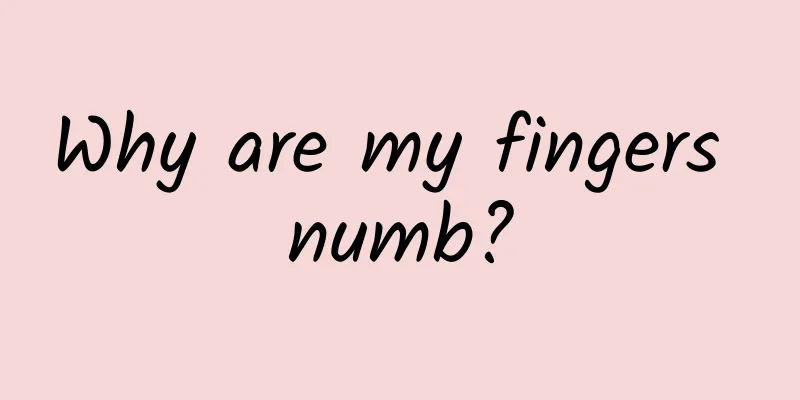Symptoms of hypocalcemia

|
Hypocalcemic convulsion is a disease that occurs in children. Convulsion is also called convulsion. The disease occurs very suddenly and progresses very rapidly. The cure rate is particularly high and it is more common in children under 5 years old. The younger the child, the more likely it is to get sick. As the name suggests, hypocalcemic convulsion is a convulsion caused by calcium deficiency in children. So why do children have convulsions? What kind of disease is convulsion? What are the symptoms of hypocalcemic convulsions? Convulsion, commonly known as "fit", is a common critical illness in newborn babies, and is more common in premature babies. The disease comes on suddenly, changes rapidly, and is severe, so it is listed as one of the four major syndromes in pediatrics in traditional Chinese medicine. It is common in children aged 1-5 years old, and the younger the age, the higher the incidence rate. Most are an indication of critical illness. If a newborn baby is found to have convulsions, he or she should be sent to the hospital immediately for further examination and treatment. Symptoms of convulsions: During a convulsion, the baby's head turns to one side, the neck is bent back, the eyes are straight or the eyeballs are slanted to one side, the eyeballs move upward, foam comes out of the mouth, the limbs are stretched out or shaking, and the hands are clenched into fists. There may be fecal and urinary incontinence (wetting the pants). The patient is unconscious, does not breathe, and has a purple face. A convulsion may last for a few seconds or minutes before it resolves on its own and stops. If the convulsion lasts for more than half an hour and still cannot be stopped, it is medically called status epilepticus. After the convulsion stops, the baby often falls into a groggy sleep. Young babies may experience twitching of the corners of their mouth and eyes, and respiratory arrest or irregular breathing. Twitches that are mild and non-twisty can be easily ignored. Seizures rarely occur only once. They often recur or occur again after a period of time. It is worth noting that babies may have local small muscle twitches after falling asleep. Sometimes, when a baby is about to wake up but not yet fully awake, his hands and feet move around, or when he is sleeping, he may have brief, slight twitches when stimulated by sound or light. These are all normal phenomena and should not be mistaken for convulsions. There are many causes of infantile convulsions, the most common ones are febrile convulsions, hypocalcemia, congenital brain malformations, subdural hematoma due to brain trauma, meningitis, epilepsy, etc. Although these diseases all have convulsions, they also have the characteristics of their own diseases. Generally speaking, the first time a seizure occurs, you must go to the hospital for examination to find out what disease caused the seizure. Emergency care No matter what the cause of the convulsion, the first thing to do is to use medication to control the convulsion as soon as possible, otherwise the convulsion will last for a long time and may cause fever or affect the heart and brain functions, and some may even die from suffocation. Good care can prevent accidental death of infants. (1) Position the child correctly. Place the convulsing baby on the bed, with him lying on his side to prevent vomit from being inhaled into the trachea, unbutton his collar and loosen his belt. Do not ask family members to move the baby around, keep the baby quiet, and have someone guard the bed to prevent the baby from falling. (2) Prevent tongue bite. During a convulsion, the baby's teeth are clenched. To prevent the baby from biting his tongue, you can put a cloth pad between the upper and lower teeth, or you can use a tongue depressor wrapped in gauze. Do not pry if the teeth are clenched. (3) Keep the airway open. The child will not cough or swallow when having sputum, so he must lie on his side to allow the phlegm or secretions in his mouth to flow out on their own. If there is too much secretion, it must be sucked out with a catheter to avoid blocking the trachea and causing suffocation. (4) Pay attention to your breathing. Generally, regardless of whether the face is cyanotic or not, oxygen should be inhaled to protect the brain tissue and prevent hypoxic encephalopathy from occurring. (5) Find out the cause of the convulsion as soon as possible. Once the baby has a convulsion, parents should not panic, they should first determine whether it is a convulsion. If you can't judge directly, please go to the hospital for examination as soon as possible! |
<<: Symptoms of a garlic allergy
>>: What are the symptoms of brain concussion?
Recommend
What can I drink to get rid of constipation immediately?
The problem of stool retention has always been bo...
Treatment of viral hepatitis
Viral hepatitis is a hepatitis disease caused by ...
The recipe of fermented rice and eggs for breast enhancement and beauty has miraculous effects
Diet is one of the most effective ways to enlarge...
Is it good to do fire therapy in summer?
Most people believe in fire therapy. It can dispe...
Medicine for skin allergies
Many people suffer from skin allergies, some are ...
What to do if bronchiectasis causes hemoptysis? Scientific treatment is needed
Bronchiectasis can cause repeated hemoptysis symp...
How to tell if your wrist is broken
We often encounter accidents such as falls and bu...
When dampness is heavy, what Chinese medicine can be used to regulate
According to the theory of traditional Chinese me...
What to do if you have blood in your urine during pregnancy? Daily conditioning should be done well
Pregnant women may experience many problems durin...
Can I eat crabs after having a medical abortion?
Crab is a common food in our daily life. Many peo...
What Chinese medicine is best for nourishing the lungs?
With the improvement of living standards, people ...
How does Traditional Chinese Medicine detoxify the body?
Traditional Chinese medicine relies on Chinese he...
What to do if your feet are sweaty and smelly
Sweating and smelly feet are more common in summe...
What happens if there is blood around the thyroid nodule?
Blood is a very important substance for our human...
What to pay attention to after cataract surgery
Cataract problems require correct treatment, such...









